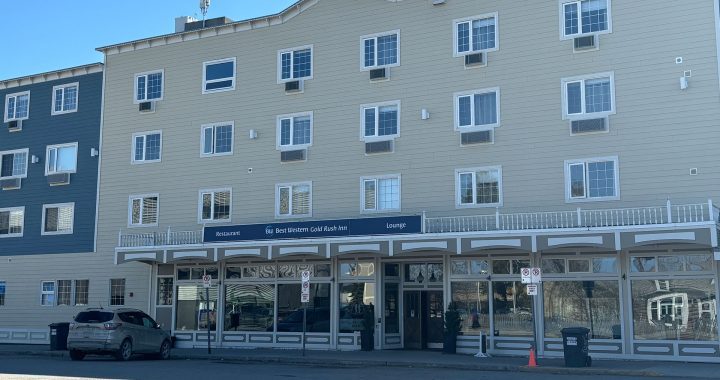Federal cabinet confidence prevents release of documents on attempted inclusion of sanatorium as residential school: document
The Harper government has invoked cabinet confidence to prevent the release of documents associated with a pending court application to include a sanatorium under the Indian residential school settlement agreement, a document shows.
By Jorge Barrera
APTN National News
The Harper government has invoked cabinet confidence to prevent the release of documents associated with a pending court application to include a sanatorium under the Indian residential school settlement agreement, a document shows.
A group of former student-patients from the now demolished Fort William Indian Hospital in Thunder Bay are trying to have the sanatorium included under the settlement agreement and are planning to take the issue to Ontario court. Many of the patients at the sanatorium were children suffering from tuberculosis and they continued their schooling while undergoing treatment.
The federal government last year rejected an application to have the sanatorium, where children stayed 24-7, as a residential school, classifying it instead as a “hospital day school.” The residential school agreement allows for the inclusion of new institutions, but sanatoriums have yet to be added to the list.
About 13 so-called Indian Hospitals had about 937 students as patients between 1953 and 1954.
Saul Day, 67, said he spent 14 years in residential schools and one year and three months at the Fort William sanatorium between 1953 and 1954 to be treated for tuberculosis. Famed Indigenous artist Norval Morrisseau also attended the same sanatorium.
“I lived in that place,” said Day. “We need to be taken seriously. The thing is we suffered just as much in those hospitals as we did in residential schools and received the same abuses.”
Day said patients faced sexual abuse from the orderlies and from older students who repeated the abuse they faced on the younger children.
“It was the same as residential school, same scenario,” he said.
As part of the process to prepare for their court action, an Access to Information request was filed with the Department of Justice last December on behalf of the patients seeking documents and emails dealing with the application to include the Fort William sanatorium as a residential school.
A July 15 response from the access to information coordinator for Justice Canada noted there were 864 relevant pages of documents, but only 22 could be released. The rest of the documents were held back under sections of the Access to Information Act that allow for the exemption of documents dealing with personal information, advice to the minister, consultations, solicitor-client privilege and cabinet confidences.
About 35 of the pages were withheld under the cabinet confidence exemption provisions.
“I would like to see them release the information,” said Day. “I am sure many others would, we need some kind of closure.”
Day said he has been in contact with several former patients at the sanatorium and all would like to see their stay there treated like a stay at a residential school.
“We can only hope,” he said.
The Fort William sanatorium was opened in 1935 and First Nations children began to be admitted in 1940. In 1941, the federal Indian Affairs department started paying for 20 beds there for the use of “Treaty Indians.” In 1950, with 40 children as patients, the federal government created a day school at the sanatorium. The new school did not include a new building because the children were taught in the hospital. By 1953, the school-sanatorium had four teachers and 160 student-patients.
The sanatorium school closed on June 30, 1971, and the sanatorium was eventually turned into a “mental retardation unit.” The original sanatorium building was knocked down in 1999.
Day said there are a lot of unanswered questions about what went on at the sanatorium. He believes some of the treatment the patients underwent may have been experimental.
“There were side-effects to the drugs we were given,” said Day. “I remember one time I couldn’t walk, because I was paralyzed from the waist down after getting one of those needles.”
Day said mystery still persists around what happened to his mother, who died when he was five years-old at a sanatorium in Brandon, Man. She had stayed for about three years.
“My mother looked very healthy and not sick and everyone thought she was really good and then one day she disappeared,” he said. “I don’t know where my mother is buried.”
He also doesn’t know why she died.
“That is the same pattern with other suspicious deaths,” he said.
In light of the recent uproar over nutritional experiments conducted in First Nations communities and in residential schools, he believes more information needs to emerge about medical trials and experiments on tuberculosis patients at these sanatoriums.
“There are a lot of stories emerging and they seem to have a pattern, like unnecessary surgeries, surgeries that resulted in deaths to seemingly healthy patients, patients who seemed ready to go home,” he said.
@JorgeBarrera









